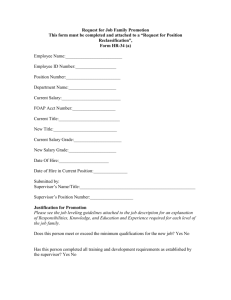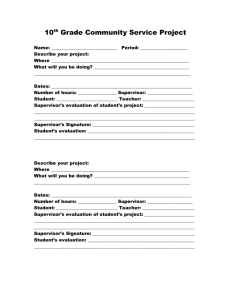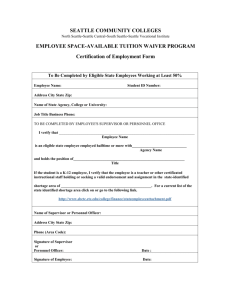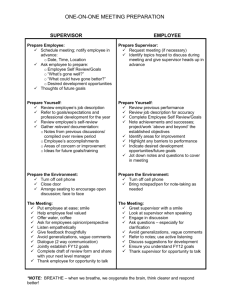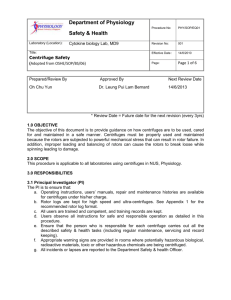doc
advertisement
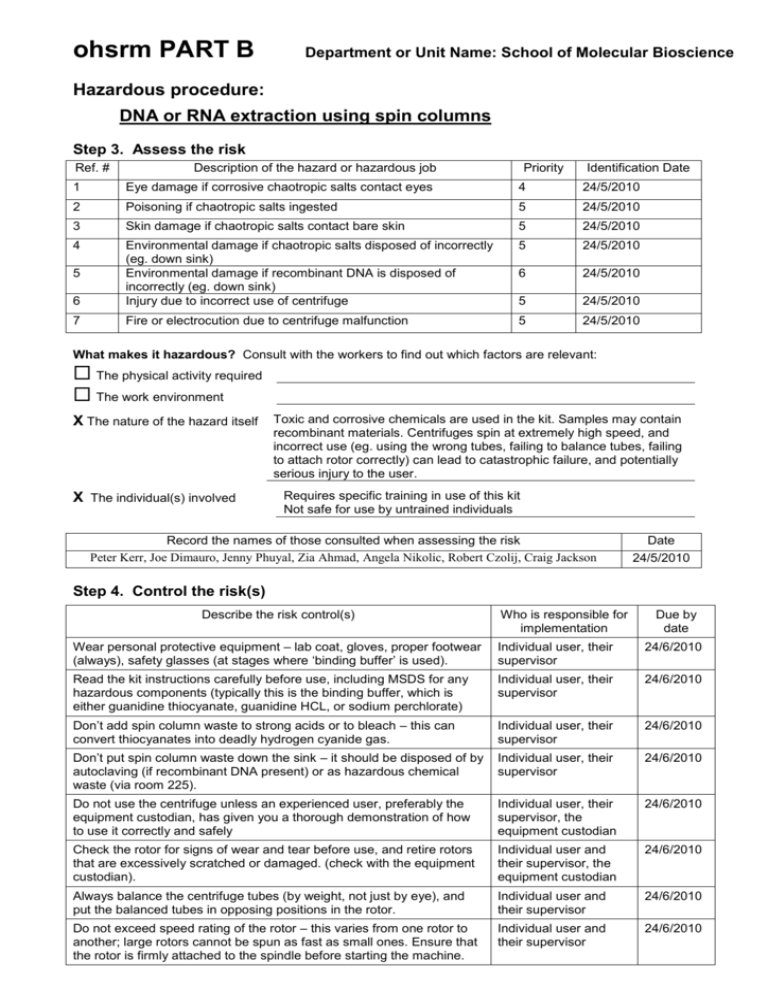
ohsrm PART B Department or Unit Name: School of Molecular Bioscience Hazardous procedure: DNA or RNA extraction using spin columns Step 3. Assess the risk Ref. # Description of the hazard or hazardous job Priority Identification Date 1 Eye damage if corrosive chaotropic salts contact eyes 4 24/5/2010 2 Poisoning if chaotropic salts ingested 5 24/5/2010 3 Skin damage if chaotropic salts contact bare skin 5 24/5/2010 4 5 24/5/2010 6 24/5/2010 6 Environmental damage if chaotropic salts disposed of incorrectly (eg. down sink) Environmental damage if recombinant DNA is disposed of incorrectly (eg. down sink) Injury due to incorrect use of centrifuge 5 24/5/2010 7 Fire or electrocution due to centrifuge malfunction 5 24/5/2010 5 What makes it hazardous? Consult with the workers to find out which factors are relevant: The physical activity required The work environment X The nature of the hazard itself Toxic and corrosive chemicals are used in the kit. Samples may contain recombinant materials. Centrifuges spin at extremely high speed, and incorrect use (eg. using the wrong tubes, failing to balance tubes, failing to attach rotor correctly) can lead to catastrophic failure, and potentially serious injury to the user. X The individual(s) involved Requires specific training in use of this kit Not safe for use by untrained individuals Record the names of those consulted when assessing the risk Peter Kerr, Joe Dimauro, Jenny Phuyal, Zia Ahmad, Angela Nikolic, Robert Czolij, Craig Jackson Date 24/5/2010 Step 4. Control the risk(s) Describe the risk control(s) Who is responsible for implementation Due by date Wear personal protective equipment – lab coat, gloves, proper footwear (always), safety glasses (at stages where ‘binding buffer’ is used). Individual user, their supervisor 24/6/2010 Read the kit instructions carefully before use, including MSDS for any hazardous components (typically this is the binding buffer, which is either guanidine thiocyanate, guanidine HCL, or sodium perchlorate) Individual user, their supervisor 24/6/2010 Don’t add spin column waste to strong acids or to bleach – this can convert thiocyanates into deadly hydrogen cyanide gas. Individual user, their supervisor 24/6/2010 Don’t put spin column waste down the sink – it should be disposed of by autoclaving (if recombinant DNA present) or as hazardous chemical waste (via room 225). Individual user, their supervisor 24/6/2010 Do not use the centrifuge unless an experienced user, preferably the equipment custodian, has given you a thorough demonstration of how to use it correctly and safely Individual user, their supervisor, the equipment custodian 24/6/2010 Check the rotor for signs of wear and tear before use, and retire rotors that are excessively scratched or damaged. (check with the equipment custodian). Individual user and their supervisor, the equipment custodian 24/6/2010 Always balance the centrifuge tubes (by weight, not just by eye), and put the balanced tubes in opposing positions in the rotor. Individual user and their supervisor 24/6/2010 Do not exceed speed rating of the rotor – this varies from one rotor to another; large rotors cannot be spun as fast as small ones. Ensure that the rotor is firmly attached to the spindle before starting the machine. Individual user and their supervisor 24/6/2010 Clean up any spills in centrifuge immediately! These contribute to corrosion of rotors, and pose a threat to other users. Use 80% ethanol to clean up biological spills, and wipe dry with paper towel. Individual user and their supervisor 24/6/2010 Proper training of centrifuge users Supervisor, and the equipment custodian 24/6/2010 Development of Standard Operating Procedure (SOP) SMB Safety Commitee 24/6/2010 Reading and following the SOP Individual user and their supervisor 24/6/2010 Record the names of those consulted when deciding on risk control measures Peter Kerr, Joe Dimauro, Jenny Phuyal, Zia Ahmad, Angela Nikolic, Robert Czolij, Craig Jackson PART B completed by: Nick Coleman Date: 22/3/2010

